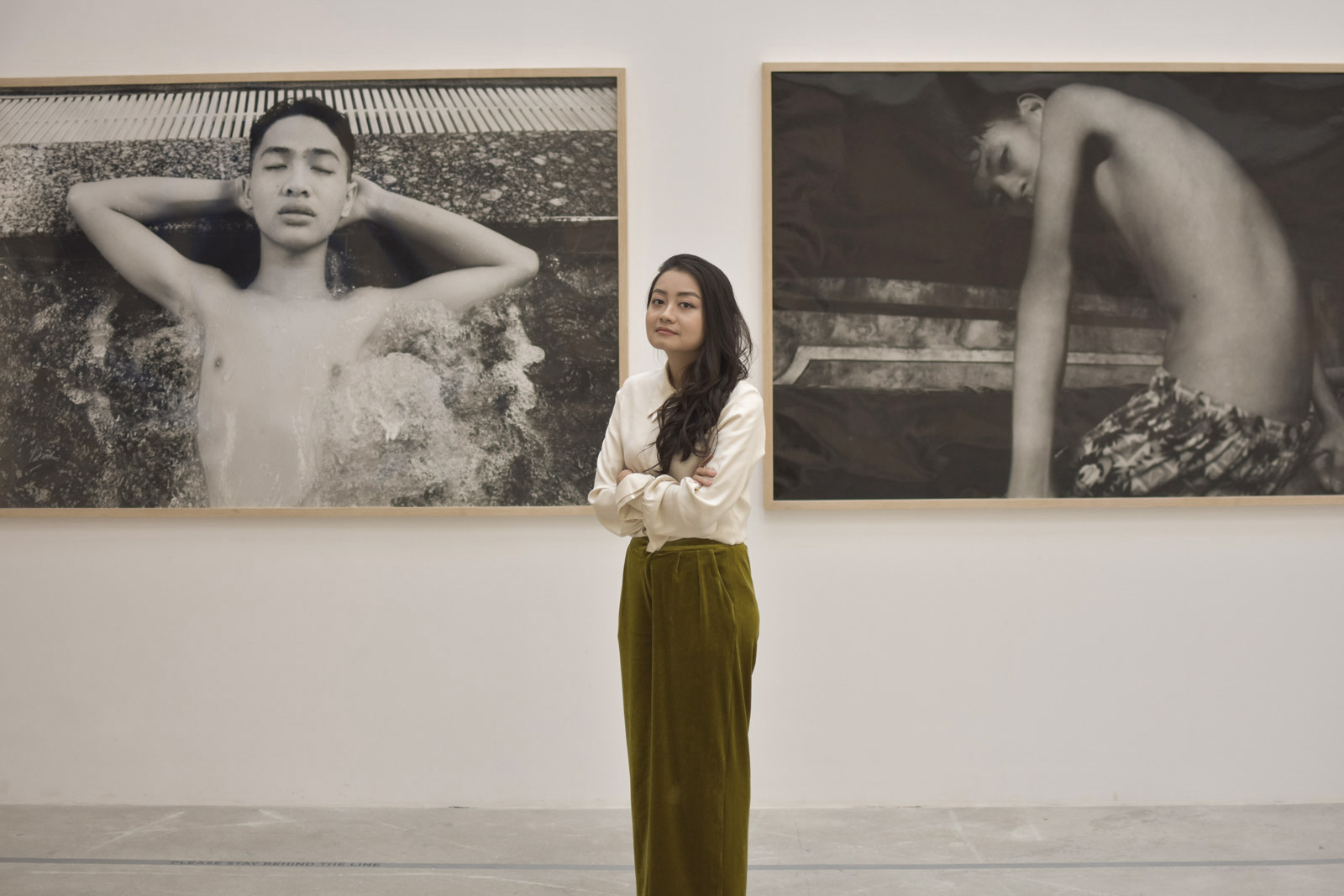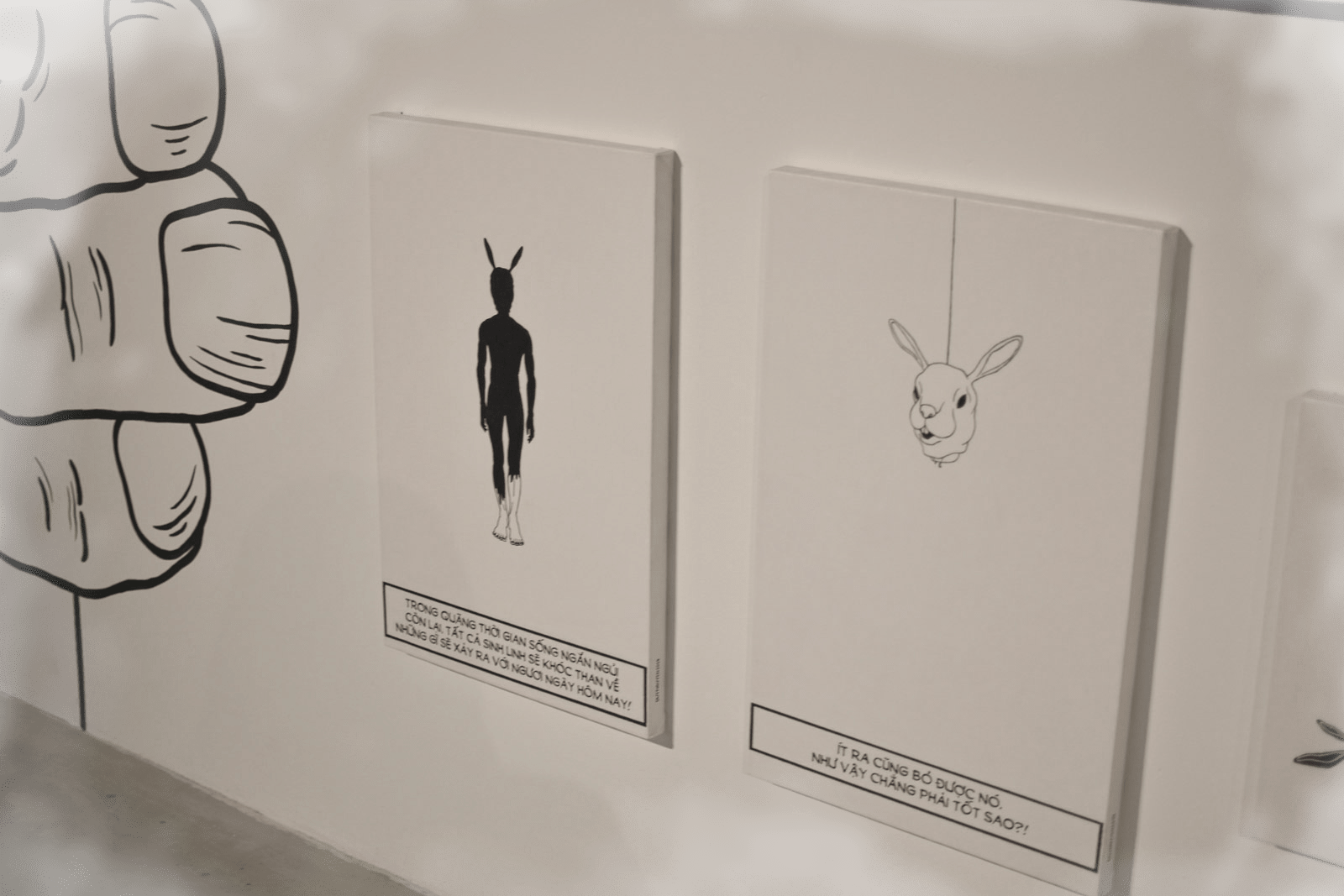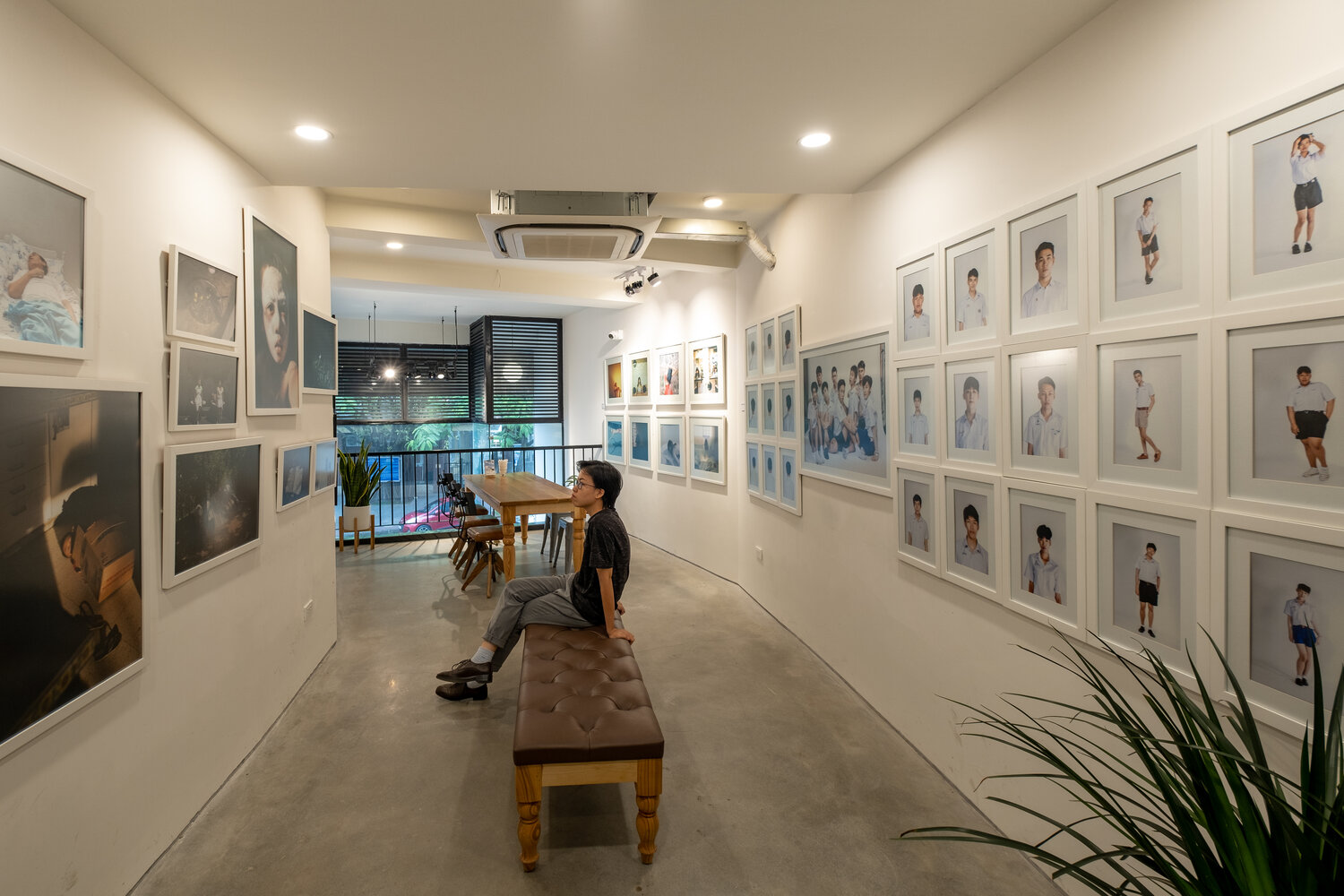When in February 2020, Đỗ Tường Linh’s exhibition Foliage III, a celebration of Global South-led art, wrapped up at the Vincom Centre for Contemporary Art, so did most other events in Vietnam’s art scene.
With the arrival of the first Covid-19 lockdown in Hanoi soon after, the country’s artists soon found themselves deprived of what had been the lifeblood of their industry – show spaces and audiences.
But the closure of all art spaces and museums didn’t devastate everyone – instead, another curator at the VCCA, An Nguy, knew she needed to get creative. Using her network of contacts and realising she could move her work online using platforms like Zoom, she organised a series of online workshops with Hoa Tam Center for the Arts.
“The online interaction between art practitioners, like artists, curators, art organisations, and the audience have become stronger and stronger during the pandemic,” An Nguy said.
While galleries and museums in the Vietnamese capital have experienced extended closures since the onset of the pandemic, this has forced the industry to adapt and grow as a whole. Innovation in how art is digitised and displayed has accelerated, with creatives pointing to more interest in Vietnamese art and culture from a wider audience as a result.
By taking events and exhibitions online, curators are overcoming broad and age-old challenges like budget and preservation, as well as providing a global platform for otherwise niche subjects. The impact of this digitisation is apparent in the viewership curators are observing from online events, bringing what might otherwise have a limited audience to art enthusiasts worldwide.
“Digital platforms such as Facebook, Instagram, and websites allow international individuals and organisations in Vietnam or abroad to access Vietnamese art more easily and more diversely,” An Nguy said. “Especially those who are not able to come to Vietnam can still find out information, research, and enjoy Vietnamese art.”
Creatives like Ha Dao, a co-founder at non-profit Hanoi art space Matca Space of Photography, are also using the pandemic as an opportunity to focus on what to digitise, how to publish content online, how to update their websites, and what messages they want to share with this content.
“Like most other creative spaces during this time, we shifted our focus to the online sphere, in particular producing content on the website and social media,” said Ha Dao, who has also led workshops on the online art space.
“Having to stop most other activities including the physical space and our own work, we were able to finalise and launch the new site in early April,” she said.

The sweltering climate of Vietnam has long posed a challenge to conserving artwork. Pieces have historically been subject to being damaged or not preserved properly in physical spaces due to heat, mould, and insect damage. But today, digitisation allows artists to record and copy in a sustainable way for long-term preservation.
“Positive reasons for a digital archive and online library is the safety of items and resources for educators and curators,” said Nguyen Thi Bich Van, the director of the Vietnamese Women’s Museum.
Another roadblock to sufficiently digisting art collections in the past for Vietnam has been an acute lack of budget, as well as technical and human resources. But the growing availability of free-to-use digital platforms like Facebook and open-source software to create 3D, virtual reality, or augmented reality exhibitions, videos and tours online has increased the ability to digitise art in the developing world.
Digitisation of art and culture has become a slow work in progress for creatives in Vietnam over the past ten years, starting with some museums digitising certain collections with state funding from the Ministry of Culture, Sport, and Tourism. But with so much daily interaction moving online during the pandemic, the lack of Vientmaese resources on art and culture online has been thrust into view.
Prior to the pandemic, there was little online content about Vietnamese art and culture, meaning that creatives and educators were having to lean on Western-centric resources to share and teach. But today, spurred on by the pandemic, the trend has spread to making digital archives for contemporary art collections, as well as cultural heritage.
Major developments in digitisation and digital display are being initiated by non-governmental art organisations like Matca Space of Photography, VCCA and Manzi. These independent art spaces are innovative in their work on the public display of digitised art collections, currently experimenting with the use of apps, artificial intelligence, virtual reality and augmented reality.
Manzi Art Space is at the forefront of utilising digital technologies for digital art projects, such as augmented reality. Into Thin Air is an ongoing art in public project initiated and curated by Manzi Art Space in 2014 and launched in 2016. The project transforms physical spaces into digital art installations across Hanoi, accessible using a smartphone.
Two of the artworks from Into Thin Air provide an example of how digital display can facilitate the exhibition of artwork: A Way to Preserve by Nguyen Huy An, located at Thong Nhat Park, and From Below, Upward by Nguyen Oanh Phi Phi, located at the Chợ Hôm, both use a digital form with virtual installation.
Until accessible abroad, [Vietnamese art] will still be seen as parochial and [through] the colonial narrative
Digitising also requires consideration from artists about which platform would suit the piece. This results in some artists uploading interactive displays on YouTube, along with artist interviews, while others publish artwork on websites, with other exhibitions being uploaded to websites in 3D mode.
For example, an exhibition on a book by Buddhist monk Thich Nhat Hanh, as well as the exhibition Mekong – stories of two river sides by Lam Duc Hien, are done via Zoom, Skype or Google Meet for convenience. Events like Open Studio AP 3: Miền Lộn | Sens Dessus Dessous by ‘Nổ Cái Bùm’ in Paris are also live streamed so people in Vietnam can partake via livestream, pictures and video.
The latest transition since the first lockdown is that some art is now being fully created online and digitally born. This is the case with independent creatives who use AI and machine learning, like emerging sound artist Nguyen Nhung, who has a website and sound art that she has created online using bandcamp.
She digitises artwork with photos and videos and develops an archive system using cloud-based services like Google Drive and Dropbox; she even creates new artwork using digital platforms like phone apps and her website.

Many artists have found that the temporary solution to showcasing art virtually in a pandemic actually tackled a number of issues the community had been experiencing for some time, including a lack of diversity in exhibitions. Some say they can now showcase a contemporary view of Vietnamese art to a global audience, which helps to update outdated colonial stereotypes.
“It is really important to get international access to the content here because there are interesting things happening here,” said Claire Driscoll, co-founder and director of Work Room Four.
“Until accessible abroad, [Vietnamese art] will still be seen as parochial and [through] the colonial narrative.”
Others say that the pandemic catalysed a movement already in the works. Ha Dao says working online has always been a priority for him, with Matca starting in 2016 as an online photography journal. Ha Dao believed going online was the most cost-effective and feasible way to pursue art in Vietnam.
“Digital platforms are used to engage with existing audiences and attract new audiences, through the use of hashtags, search engine optimisation, interactions such as likes, comments and shares, and so forth,” Ha Dao said.
“Based on the statistics, most are aged 18 to 34 from Vietnam with a minority from Southeast Asian countries and English-speaking countries such as the US, the UK and Australia.”
Ha Dao refers to the online journal as an “open archive” of the development of photography in Vietnam and Southeast Asia. The content is digitised and made publicly accessible, which means it is open to all.
Her mission is to raise awareness and develop conversations on Vietnamese photography, as well as to give photographers a digital and physical space to show their artwork publicly. They do this with physical events but, more often, through digitisation and displays on their website.
“Our website is the only place to find photography in Vietnam. So we have it open so everyone can access it,” Ha said.
This new generation of creatives are finding that by tackling the obstacles laid out by Covid-19, they’ve been able to overcome long-term challenges that have persisted in the world of Vietnamese art. The pandemic has spotlighted misrepresentation of Vietnamese culture online and catalysed more artists self-creating and publishing.
This way, cultural creatives are changing the image of Vietnamese art and culture – from something hidden away from the general public and international audiences behind now-closed museum doors, to something that is exciting for a younger generation.
Emma Duester is a lecturer in the School of Communication & Design at RMIT University in Hanoi, and leads a research project investigating the digitisation of the art and culture in Vietnam. She has published recent articles including, ‘Redressing Digital Orientalism: How Vietnamese Cultural Professionals are harnessing new digital technologies to reclaim the narrative on Vietnamese art and culture’.


